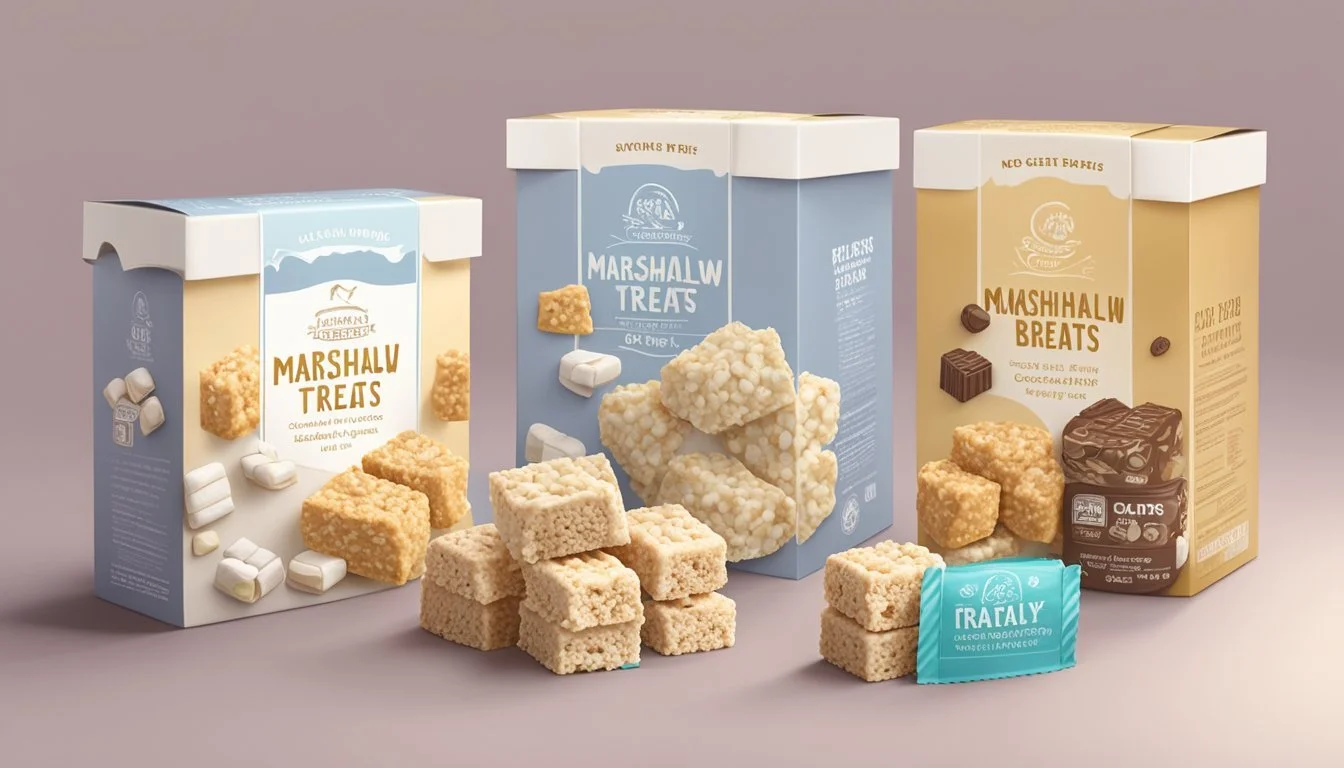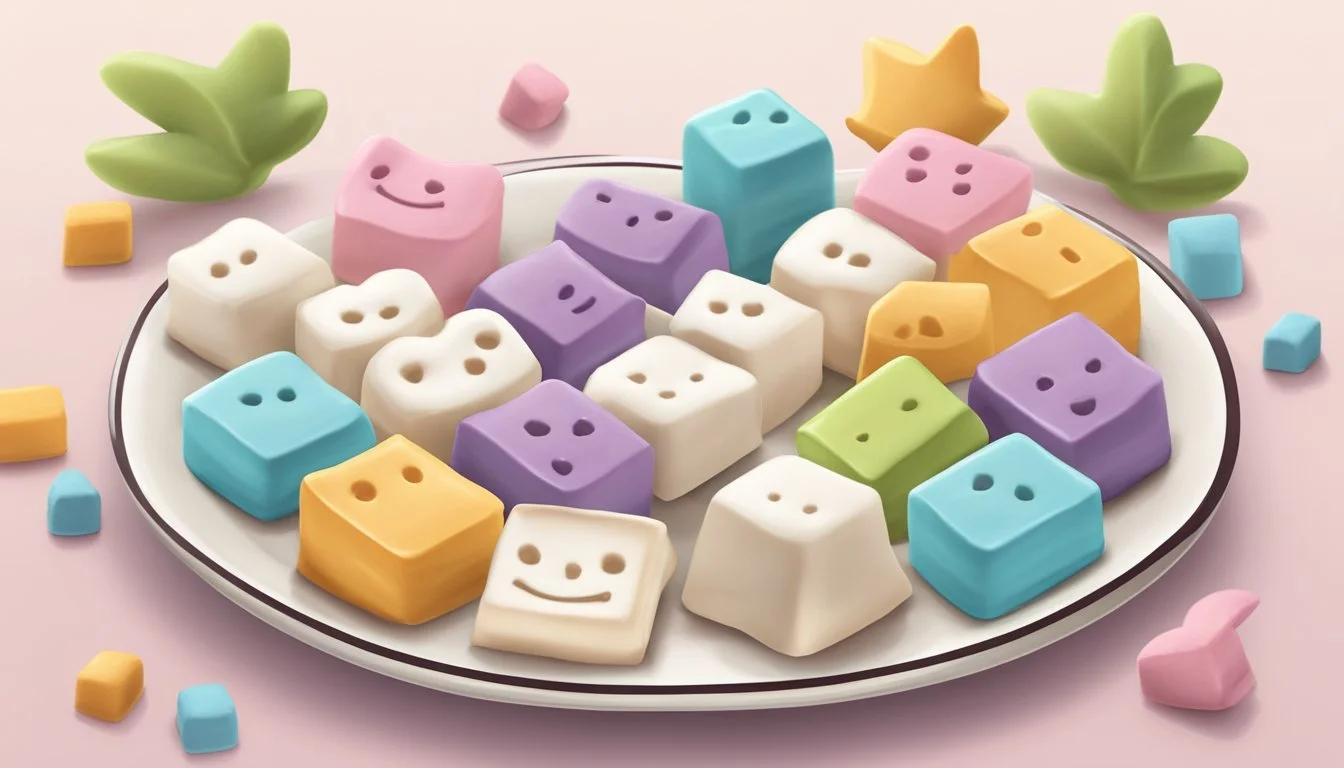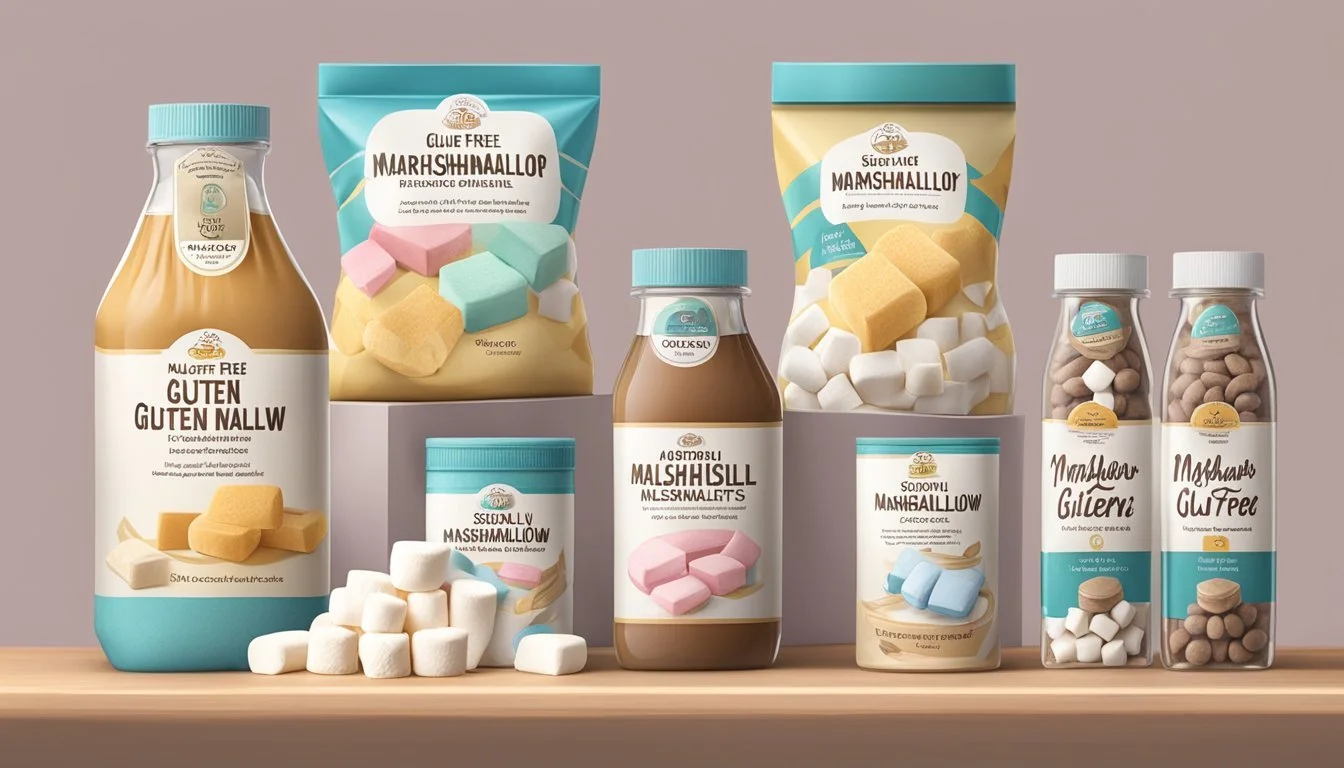Are Marshmallow Treats Gluten-Free?
Unwrapping the Truth about Snack Ingredients
Marshmallows are a beloved confection enjoyed by many, often associated with childhood memories of campfires and sweet treats. At their core, marshmallows are simple sweets, primarily made of sugar, water, and gelatin. Gelatin is a protein derived from animals that gives marshmallows their unique texture. This simple mixture, in its pure form, contains no gluten-containing ingredients, which suggests that marshmallows should be gluten-free by default.
However, the question of whether marshmallow treats are gluten-free can be more complex due to the manufacturing processes and the potential for cross-contamination. Food production facilities might process items that contain gluten, leading to the inadvertent introduction of gluten to marshmallow products. Additionally, marshmallow treats often include other ingredients or are consumed with products like graham crackers or cereals that may contain gluten. Careful label reading and awareness of manufacturing practices become crucial for those with celiac disease or a gluten intolerance to ensure the avoidance of gluten.
Most marshmallow brands in the United States are labeled as gluten-free, reflecting the absence of gluten-containing ingredients in their recipes. However, it is also important to consider marshmallow products or treats made with marshmallows, as these may include other ingredients that contain gluten. Celiac disease diets require strict adherence to gluten-free options, and as such, individuals need to select products that are clearly marked as gluten-free or have been verified by the manufacturer to ensure they meet dietary needs.
What Are Marshmallow Treats?
Marshmallow treats are a type of dessert that primarily feature marshmallows as a key ingredient. They often incorporate various additional ingredients to create different flavors and textures. These treats can range from simple to elaborate, making them versatile for numerous occasions and preferences.
Key Ingredients
Marshmallows: The centerpiece of these treats, composed of sugar, water, gelatin, and sometimes corn syrup.
Sugar: Provides sweetness and can be in granulated, powdered, or syrup form.
Gelatin: A gelling agent derived from animal collagen, crucial for marshmallow's structure.
Water: Used to dissolve sugar and gelatin in the marshmallow-making process.
Corn Syrup: Often added to prevent crystallization and to give marshmallows a smooth texture.
Popular Marshmallow Treat Varieties
Bars: Typically combine marshmallows with crisped rice cereal to create a chewy, sweet confection like Rice Krispies Treats®.
S'mores: A campfire favorite layering marshmallows, chocolate, and graham crackers.
Desserts: Incorporate marshmallows into pies, cakes, brownies, and cookies for added sweetness and texture.
Cakes and Pies: Use marshmallows as filling or topping, often melted for a gooey consistency.
Cookies and Brownies: Feature marshmallows either mixed into the batter or as a topping for extra gooeyness.
Understanding Gluten
This section will provide insight into the two main aspects of gluten: its common dietary sources and its impact on health.
Sources of Gluten
Gluten is a family of proteins commonly found in grains such as wheat, barley, and rye. It is what gives bread dough its elasticity and baked goods their chewy texture. Gluten is present in a wide array of products, from the obvious like breads and pastries, to less evident items such as sauces, salad dressings, and beer.
Wheat: The most prevalent source, found in breads, pastas, cereals, and more.
Barley: Used in malted products, beer, and as a flavoring or coloring agent.
Rye: Typically found in rye breads, pumpernickel, and certain cereals.
Effects of Gluten on Health
For most individuals, consuming gluten is not a health concern. However, for someone with celiac disease, consuming gluten triggers an immune response that damages their small intestine lining. This can result in symptoms like abdominal pain, bloating, diarrhea, constipation, and headaches.
A less severe sensitivity, non-celiac gluten intolerance, can lead to similar but typically less intense symptoms. Strict adherence to a gluten-free diet is critical for individuals with celiac disease, and being mindful of gluten is important for those with intolerance. This means that foods like marshmallows, unless contaminated or made with gluten-containing additives, can often be included in their diets.
Gluten-Free Diet Essentials
Understanding which foods fit into a gluten-free diet is crucial. Accurate identification and labeling are the pillars that support safe dietary choices for those with celiac disease or gluten sensitivity.
Identifying Gluten-Free Foods
To maintain a gluten-free diet, individuals need to recognize foods that do not contain gluten—a protein found in wheat, barley, rye, and their derivatives. Foods that are inherently gluten-free include fruits, vegetables, meat, fish, dairy, legumes, nuts, and most oils and fats. Certified gluten-free products are generally safe, but caution should be taken with items that may have cross-contact with gluten during processing.
Grains, such as rice, corn, quinoa, and buckwheat, are naturally gluten-free, though one should always check to ensure they haven't been processed in a facility that also handles gluten-containing grains. Modified food starch, when derived from corn or potatoes, is typically gluten-free. However, wheat starch must be avoided unless it has been specifically processed to remove gluten and carries a gluten-free label.
Importance of Gluten-Free Labeling
Gluten-free labeling is a critical factor in the safety of foods for those avoiding gluten. The gluten-free label indicates that a product complies with specific standards and contains less than 20 parts per million of gluten, which is considered safe for most individuals with celiac disease. The nutrition facts label and ingredient list can offer additional insights into the contents of a product.
When examining a label, the absence of a gluten-free claim does not necessarily mean the presence of gluten; the product might naturally be gluten-free. However, the nutrition label should still be scrutinized for ingredients that may signal the presence of gluten, such as malt flavoring or certain food starches, unless identified as gluten-free.
It is imperative to stay informed about potential sources of gluten and to understand food labeling to ensure products are suitable for a gluten-free diet. Always verify the information on the packaging, including the nutrition facts and ingredients list, to ensure a product is appropriate for your gluten-free lifestyle.
Are Marshmallows Gluten-Free?
When considering marshmallow treats, it is essential for individuals with gluten sensitivities to understand the gluten content of marshmallows. The gluten-free status of marshmallows can vary based on the brand and added ingredients.
Marshmallow Brands Review
Kraft, one of the most recognized brands, produces Jet-Puffed marshmallows which are considered gluten-free. Dandies, known for their vegan marshmallow offerings, also present gluten-free marshmallows suitable for individuals with dietary restrictions. Another well-known brand, Campfire, provides gluten-free marshmallows, often favored for classic campfire treats.
Peeps, a seasonal marshmallow treat, have been confirmed as gluten-free by the manufacturer, allowing those with gluten sensitivities to partake in holiday traditions. Great Value, Walmart's store brand, as well as Good & Gather from Target and marshmallows from Trader Joe’s, all offer gluten-free marshmallow options.
In the realm of marshmallow spreads, Marshmallow Creme by Kraft Jet-Puffed is also gluten-free, expanding the options for gluten-sensitive consumers.
Gluten Content in Marshmallows
Typically, marshmallows are made from ingredients such as sugar, corn syrup, water, modified corn starch, and gelatin—all of which do not contain gluten. However, it's crucial to be vigilant:
Additional flavorings or mix-ins can introduce gluten.
Cross-contamination during manufacturing may affect gluten-free claims.
Consumers should always check product labels for the most accurate information. Brands are continually updating their recipes and manufacturing processes, which can alter the gluten-free status of their products.
Cross-Contamination Risks
When discussing gluten-free marshmallow treats, it's imperative to consider the risks of cross-contamination, which can occur during manufacturing and packaging processes. Even trace amounts of gluten can pose a problem for individuals with gluten sensitivities or celiac disease.
Manufacturing and Packaging
During the manufacturing process, marshmallows can come into contact with gluten-containing products or surfaces. Equipment shared with gluten-containing foods can contaminate marshmallows or marshmallow fluff. Packaging facilities that handle a multitude of products may also inadvertently introduce gluten into marshmallow packages. Labels stating "may contain traces of wheat" or similar warnings indicate a potential risk for cross-contamination.
Key Points:
Shared equipment in manufacturing can lead to gluten contamination.
The packaging environment is a potential source of contamination.
Avoidance Strategies
Consumers aiming to avoid cross-contamination should seek marshmallow products that are explicitly labeled as gluten-free, ensuring that the product has met strict gluten-free standards. Opting for brands that use dedicated gluten-free facilities can minimize the risk. Ingredients like corn starch are often used in gluten-free marshmallow recipes and do not pose a gluten threat. However, vigilance is required to confirm that the corn starch itself is sourced from a gluten-free facility. Reading labels and doing research on manufacturers can offer additional reassurance for those concerned with gluten exposure.
Key Points:
Look for explicit gluten-free labeling on marshmallow products.
Verify that ingredients like corn starch come from gluten-free sources.
Additional Considerations for a Gluten-Free Lifestyle
When adopting a gluten-free lifestyle, individuals must diligently assess food labels and be aware of cross-contamination risks. Awareness of related dietary needs, such as vegan or kosher requirements, is also imperative.
Related Dietary Restrictions
Individuals may choose or need to follow a diet that is both gluten-free and adheres to other dietary restrictions, such as vegan, kosher, or dairy-free practices. Products certified by the Celiac Disease Foundation or holding a gluten-free certification often meet stringent guidelines that can align with these other dietary needs. However, one should always verify each product's certification to ensure it complies with their specific dietary restrictions.
Vegan: Gluten-free individuals who are also vegan should look for items that omit animal products and by-products.
Kosher: Kosher gluten-free consumers need to ensure that products adhere to Jewish dietary laws in addition to being free from gluten.
Dairy-Free: Some gluten-free individuals may also be lactose intolerant or choose to avoid dairy, necessitating careful scrutiny of product ingredients.
Reading Nutrition and Ingredient Labels
Careful reading of nutrition and ingredient labels is crucial for maintaining a strict gluten-free diet. Cross-contamination with gluten can occur during manufacturing, and this can be particularly prevalent among processed foods.
Ingredient Lists: If gluten is present, it should be listed; however, some labels may use terms such as 'natural flavors' or 'modified food starch,' which could be derived from gluten sources.
Certification Logos: Look for gluten-free certification logos as they indicate that the product has been independently tested and contains less than 20 ppm (parts per million) of gluten, which is the threshold for gluten-free labeling.
Allergen Statements: These are often located near the ingredient list and can provide additional information about potential cross-contamination with gluten.
By staying informed and meticulous about food choices, individuals living with celiac disease or gluten sensitivity can ensure they adhere to a safe, gluten-free diet while also respecting any additional dietary restrictions they may have.
Creating Gluten-Free Marshmallow Treats
Creating gluten-free marshmallow treats involves selecting the right ingredients and employing specific home cooking techniques to ensure the final product is safe for those with gluten sensitivities. Understanding the components of traditional marshmallow treats helps in crafting a gluten-free alternative without compromising taste or texture.
Home Cooking Techniques
The first step in making gluten-free marshmallow treats is ensuring that all surfaces and utensils are thoroughly cleaned to prevent cross-contamination. Cooks must use ingredients that are certified gluten-free, such as gluten-free marshmallows, which often substitute glucose or malt syrup for the commonly found corn syrup. Dandies Marshmallows are a popular choice as they are confirmed to be gluten-free and also free from common allergens like dairy, making them suitable for a broader range of dietary restrictions.
During preparation, the gelatin — a key ingredient for giving marshmallows their signature texture — needs to be allowed to bloom, or hydrate, in water. Gelatin is naturally gluten-free, but for a plant-based alternative, agar powder may be used. If making marshmallows from scratch, mixing the gelatin with warm water and other flavorings like vanilla extract until it thickens is essential. The mixture should then be beaten until it reaches the desired fluffy consistency, which may take some time, depending on whether a stand mixer or hand mixer is used.
Gluten-Free Marshmallow Recipes
For homemade gluten-free marshmallow treats, the recipe may include:
Butter: Gluten-free options should be used, and dairy-free versions are available for individuals with additional dietary needs.
Marshmallows: Gluten-free marshmallows should be melted down. One can melt them with butter in a saucepan over low heat until well-blended, stirring constantly to avoid burning.
Gluten-Free Cereal: Essential for the classic marshmallow treat texture, ensuring the chosen cereal is gluten-free is critical.
Ingredients:
Dairy-free, gluten-free butter or margarine
Gluten-free marshmallows
Gluten-free cereal
Directions:
Line a pan with parchment paper.
Melt dairy-free butter over low heat in a large saucepan.
Add marshmallows and stir until fully melted.
Remove from heat and immediately stir in gluten-free cereal.
Press the mixture evenly into the prepared pan.
These techniques and recipes allow individuals who are avoiding gluten to enjoy the same delightful flavors and textures marshmallow treats offer. Additionally, substituting butter with a dairy-free option and using gluten-free ingredients allows these treats to be enjoyed by those with multiple food sensitivities.
Buying Guide for Gluten-Free Marshmallow Products
Navigating the world of gluten-free treats can be daunting, but finding gluten-free marshmallow products is straightforward with the right information. Consumers should pay close attention to brands with verified gluten-free labeling and availability at reputable stores.
Recommended Brands and Stores
Brands:
Dandies Vanilla Marshmallows: Widely praised for being gluten-free and vegan, Dandies Vanilla Marshmallows are a safe choice for those with gluten sensitivities.
Doumak: Operating under 'The American Marshmallow Company', Doumak's marshmallows, such as the Campfire brand, are all gluten-free. These can often be found under Walmart’s store brand as well.
Just Born: Known for Peeps marshmallows, Just Born products are also gluten-free, making them a fun option during holidays or for everyday enjoyment.
Stores:
Walmart: Carries a variety of gluten-free marshmallows, including their own store brand marshmallows that are gluten-free.
Sprouts: A health-oriented store like Sprouts typically stocks gluten-free options such as Dandies.
What to Look for on Labels
When examining marshmallow products, consumers should look for:
A gluten-free label as this indicates the product has met strict gluten-free standards.
Ingredients: Look for marshmallows made from sugar, corn syrup, and gelatin, ideally without additional additives.
Cross-contamination warnings: Even if the ingredients are gluten-free, products processed in facilities that handle gluten may not be safe for those with celiac disease or high sensitivity.
Certifications: If available, third-party certifications can provide an extra level of assurance.
Consumers must be vigilant when selecting gluten-free marshmallow products. Marshmallow fluff, for instance, is often gluten-free but should be checked for labeling to confirm. Jet-Puffed is a popular brand known to have gluten-free options but double-check for the gluten-free label to ensure safety. By paying attention to these details, individuals can enjoy marshmallow treats without compromising their gluten-free dietary needs.
Conclusion
Marshmallows are predominantly gluten-free, generally safe for individuals with gluten sensitivities. It is important, however, to consider the manufacturing environment, as facilities that also process gluten-containing products may introduce the risk of cross-contamination. Ingredients to watch for include flavorings and additives that might contain gluten.
Popular Brands:
Dandies: Manufactured on dedicated gluten-free lines.
Campfire: Produced by Doumak, known for gluten-free products.
Kraft Jet-Puffed: Although not labeled as gluten-free, they do not list gluten-containing ingredients.
When it comes to marshmallow treats, vigilance is crucial. Pre-packaged products like Starbucks Gluten-Free Marshmallow Dream Bar are labeled gluten-free, providing a safer option for those on a strict gluten-free diet. Reading labels carefully is essential and a best practice for avoiding gluten.
For consumers with celiac disease, sticking to brands that assure a gluten-free manufacturing process is key. Always inspect labels for the certified gluten-free mark or for any mentions of shared equipment with wheat or gluten products.
Important: If a product doesn't clearly state its gluten-free status, reaching out to the manufacturer for confirmation is advised.
In conclusion, marshmallows can be a delightful addition to a gluten-free diet when due diligence is practiced. Safe choices are available, making it possible for those with gluten intolerance to enjoy marshmallow treats without compromising their health.





